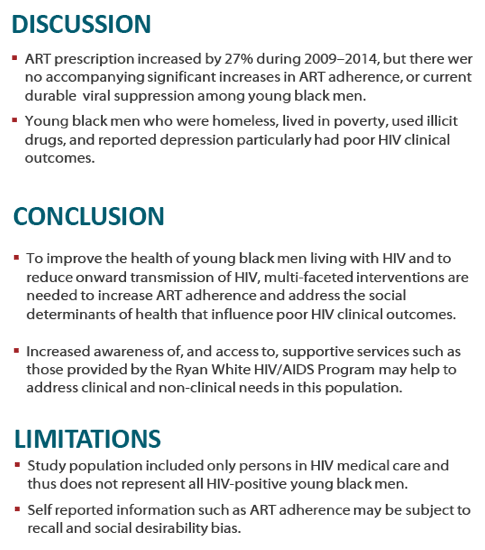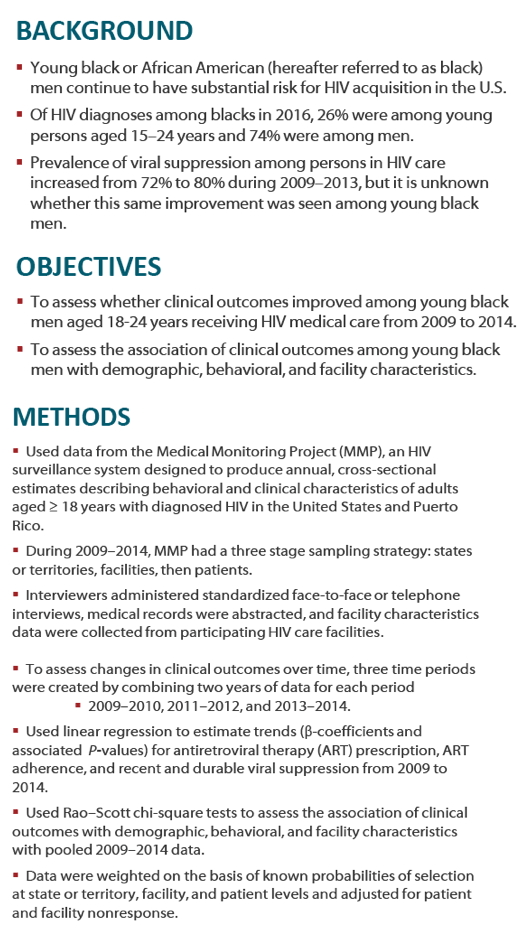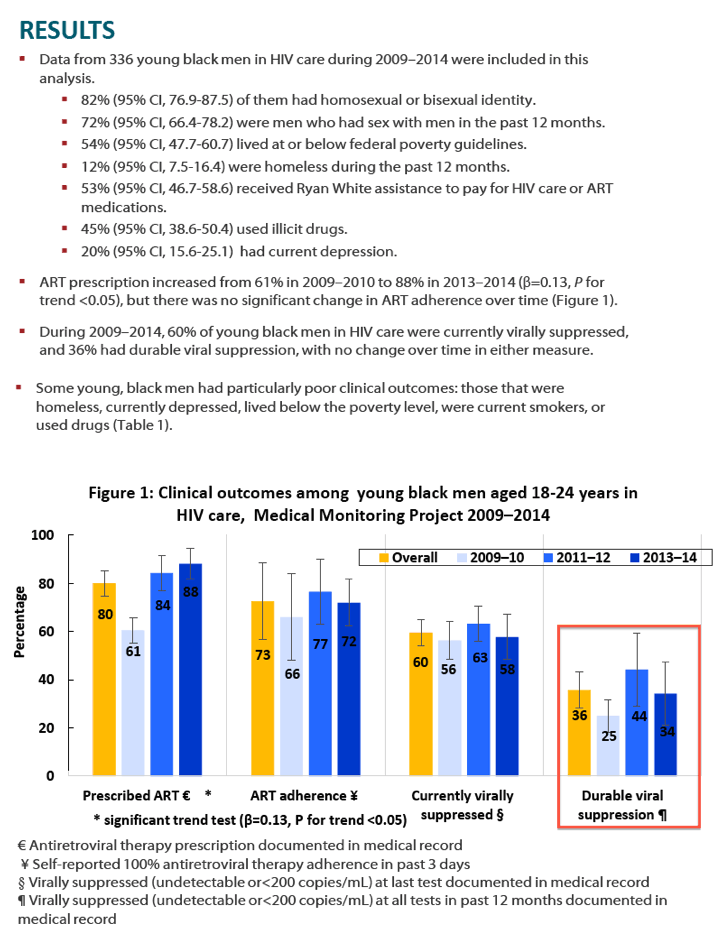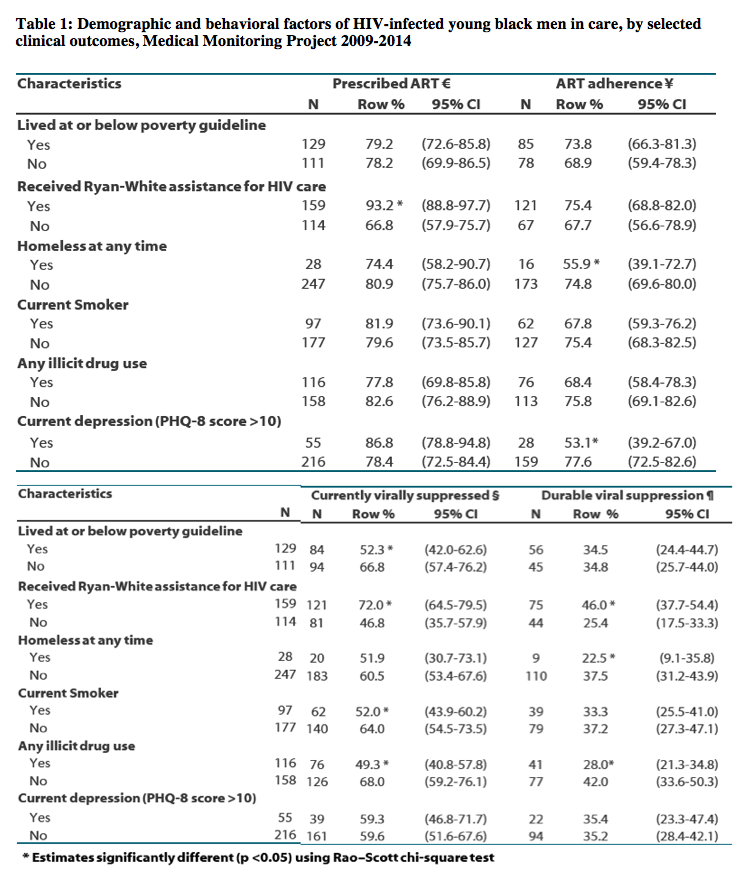 |
 |
 |
| |
CDC: Clinical outcomes of US young black men with HIV receiving medical care, 2009-2014 - More ART for Young Black Men in US, But Adherence and Suppression Flat
|
| |
| |
25th Conference on Retroviruses and Opportunistic Infections (CROI), March 4-7, 2018, Boston
Mark Mascolini
Prescription of antiretroviral therapy (ART) rose from 2009-2010 through 2013-2014 among young black men in HIV care in the United States [1]. But over the same period, neither ART adherence nor HIV suppression rates improved.
Among blacks diagnosed with HIV in 2016, one quarter were people 15 to 24 years old and three quarters were men. Among all people in HIV care in the United States, viral suppression prevalence climbed from 72% in 2009 to 80% in 2013. But suppression rates and related data in young black men remained unknown until this study.
To address ART variables over time in young US black men, Centers for Disease Control and Prevention (CDC) researchers analyzed numbers from the Medical Monitoring Project, an HIV surveillance system that yields annual cross-sectional estimates in a population representing all US adults in care for HIV infection. This analysis clustered data into three periods, 2009-2010, 2011-2012, and 2013-2014. Researchers used linear regression to estimate trends in ART prescription, ART adherence, and recent and durable viral suppression across those three periods.
The analysis included 336 young black men in HIV care in 2009-2014. Most, 82%, identified themselves as gay or bisexual, and 72% had sex with men in the past 12 months. While 54% lived at or below the poverty levels, 53% received Ryan White assistance for HIV care, and 12% were homeless during the past 12 months. Almost half, 45%, used illicit drugs, and 20% had depression.
ART prescription rates for young black men jumped from 61% in 2009-2010 to 88% in 2013-2014, a significant improvement (beta = 0.13, P < 0.05). But ART adherence rates did not rise significantly, standing at 66% in in 2009-2010 and at 72% in 2013-2014. Current viral suppression rates lay at 56% in 2009-2010 and 58% in 2013-2014, far below the overall US rates of 72% in 2009 and 80% in 2013. Durable viral suppression (suppression on all tests in the past 12 months) rose from 25% in 2009-2010 to 34% in 2013-2014, a nonsignificant uptick.
Some of these outcomes proved significantly worse in certain subgroups, including men who were homeless, currently depressed, or living below the poverty level, as well as smokers and drug users. For example, 52.3% of men living below the poverty level versus 66.8% of others had current viral suppression. Current suppression rates for smokers and nonsmokers were 52% and 64%. Only 22.5% of homeless men had durable viral suppression versus 37.5% of men with homes. Durable HIV suppression rates for drug users and non-drug users were 28% and 42%. ART adherence rates measured 53.1% in men with depression versus 77.6% in men without depression (P < 0.05 for all comparisons).
The CDC investigators stressed that "multifaceted interventions are needed to increase ART adherence and address the social determinants of health that influence poor HIV clinical outcomes" in young black men. They suggested raising awareness of and access to supportive services like those provided by the Ryan White program.
Reference
1. Chowdury PP, Beer L, Shouse RL, Bradley H. Clinical outcomes of US young black men with HIV receiving medical care, 2009-2014. 25th Conference on Retroviruses and Opportunistic Infections (CROI). March 4-7, 2018. Boston. Abstract 1126.





|
| |
|
 |
 |
|
|